Apple Inc.
 Apple Inc. (NASDAQ: AAPL; previously Apple Computer, Inc.) is an Americanmultinational corporation that designs and markets consumer electronics, computer software, and personal computers. The company's best-known hardware products include the Macintoshline of computers, the iPod, the iPhone and the iPad. Apple software includes the Mac OS Xoperating system; the iTunes media browser; the iLife suite of multimedia and creativity software; the iWork suite of productivity software; Aperture, a professional photography package; Final Cut Studio, a suite of professional audio and film-industry software products;Logic Studio, a suite of music production tools; the Safari web browser; and iOS, a mobile operating system. As of October 2010, the company operates 317 retail stores in ten countries,and an online store where hardware and software products are sold. As of September 2011, Apple is the largest publicly traded company in the world by market capitalization and the largest technology company in the world by revenue and profit.
Apple Inc. (NASDAQ: AAPL; previously Apple Computer, Inc.) is an Americanmultinational corporation that designs and markets consumer electronics, computer software, and personal computers. The company's best-known hardware products include the Macintoshline of computers, the iPod, the iPhone and the iPad. Apple software includes the Mac OS Xoperating system; the iTunes media browser; the iLife suite of multimedia and creativity software; the iWork suite of productivity software; Aperture, a professional photography package; Final Cut Studio, a suite of professional audio and film-industry software products;Logic Studio, a suite of music production tools; the Safari web browser; and iOS, a mobile operating system. As of October 2010, the company operates 317 retail stores in ten countries,and an online store where hardware and software products are sold. As of September 2011, Apple is the largest publicly traded company in the world by market capitalization and the largest technology company in the world by revenue and profit.
Established on April 1, 1976 in Cupertino, California, and incorporated January 3, 1977, the company was previously named Apple Computer, Inc., for its first 30 years, but removed the word "Computer" on January 9, 2007, to reflect the company's ongoing expansion into theconsumer electronics market in addition to its traditional focus on personal computers. As of September 2010, Apple had 46,600 full time employees and 2,800 temporary full time employees worldwideand had worldwide annual sales of $65.23 billion.
For reasons as various as its philosophy of comprehensive aesthetic design to its distinctive advertising campaigns, Apple has established a unique reputation in the consumer electronics industry. This includes a customer base that is devoted to the company and its brand, particularly in the United States. Fortune magazine named Apple the most admired company in the United States in 2008, and in the world in 2008, 2009, and 2010. The company has also received widespread criticism for its contractors' labor, environmental, and business
History
1976–1980: The early years
Apple was established on April 1, 1976 by Steve Jobs, Steve Wozniak, and Ronald Wayne, to sell the Apple I personal computer kit. They were hand-built by Wozniak and first shown to the public at the Homebrew Computer Club. The Apple I was sold as a motherboard (with CPU,RAM, and basic textual-video chips)—less than what is today considered a complete personal computer. The Apple I went on sale in July 1976 and was market-priced at $666.66 ($2,572 in 2011 dollars, adjusted for inflation.)
Apple was incorporated January 3, 1977 without Wayne, who sold his share of the company back to Jobs and Wozniak for $800. Multi-millionaire Mike Markkula provided essential business expertise and funding of $250,000 during the incorporation of Apple.
The Apple II was introduced on April 16, 1977 at the first West Coast Computer Faire. It differed from its major rivals, the TRS-80 and Commodore PET, because it came with color graphics and an open architecture. While early models used ordinary cassette tapes as storage devices, they were superseded by the introduction of a 5 1/4 inch floppy disk drive and interface, the Disk II.
The Apple II was chosen to be the desktop platform for the first "killer app" of the business world—the VisiCalc spreadsheet program. VisiCalc created a business market for the Apple II, and gave home users an additional reason to buy an Apple II—compatibility with the office. According to Brian Bagnall, Apple exaggerated its sales figures and was a distant third place to Commodore and Tandy until VisiCalc came along.
By the end of the 1970s, Apple had a staff of computer designers and a production line. The company introduced the ill-fated Apple III in May 1980 in an attempt to compete with IBM and Microsoft in the business and corporate computing market.
Jobs and several Apple employees including Jef Raskin visited Xerox PARC in December 1979 to see the Xerox Alto. Xerox granted Apple engineers three days of access to the PARC facilities in return for the option to buy 100,000 shares (800,000 split-adjusted shares) of Apple at the pre-IPO price of $10 a share. Jobs was immediately convinced that all future computers would use a graphical user interface (GUI), and development of a GUI began for the Apple Lisa
1981–1985: Lisa and Macintosh
Steve Jobs began working on the Apple Lisa in 1978 but in 1982 he was pushed from the Lisa team due to infighting, and took over Jef Raskin's low-cost-computer project, the Macintosh. A turf war broke out between Lisa's "corporate shirts" and Jobs' "pirates" over which product would ship first and save Apple. Lisa won the race in 1983 and became the first personal computer sold to the public with a GUI, but was a commercial failure due to its high price tag and limited software titles.
In 1984, Apple next launched the Macintosh. Its debut was announced by the now famous $1.5 milliontelevision commercial "1984". It was directed by Ridley Scott, aired during the third quarter of Super Bowl XVIIIon January 22, 1984, and is now considered a watershed event for Apple's success. and a "masterpiece".
The Macintosh initially sold well, but follow-up sales were not strong due to its high price and limited range of software titles. The machine's fortunes changed with the introduction of the LaserWriter, the first PostScript laser printer to be offered at a reasonable price, and PageMaker, an early desktop publishing package. The Mac was particularly powerful in this market due to its advanced graphics capabilities, which had necessarily been built in to create the intuitive Macintosh GUI. It has been suggested that the combination of these three products was responsible for the creation of the desktop publishing market.
In 1985 a power struggle developed between Jobs and CEO John Sculley, who had been hired two years earlier. The Apple board of directors instructed Sculley to "contain" Jobs and limit his ability to launch expensive forays into untested products. Rather than submit to Sculley's direction, Jobs attempted to oust him from his leadership role at Apple. Sculley found out that Jobs had been attempting to organize a putsch and called a board meeting at which Apple's board of directors sided with Sculley and removed Jobs from his managerial duties. Jobs resigned from Apple and founded NeXT Inc. the same year.
1986–1993: Rise and fall
Having learned several painful lessons after introducing the bulky Macintosh Portable in 1989, Apple introduced the PowerBook in 1991, which established the modern form factor andergonomic layout of the laptop computer. The Macintosh Portable was designed to be just as powerful as a desktop Macintosh, but weighed 7.5 kilograms (17 lb) with a 12-hour battery life. The same year, Apple introduced System 7, a major upgrade to the operating system, which added color to the interface and introduced new networking capabilities. It remained the architectural basis for Mac OS until 2001.
The success of the PowerBook and other products brought increasing revenue. For some time, it appeared that Apple could do no wrong, introducing fresh new products and generating increasing profits in the process. The magazine MacAddict named the period between 1989 and 1991 as the "first golden age" of the Macintosh.
Following the success of the Macintosh LC, Apple introduced the Centris line, a low-end Quadraoffering, and the ill-fated Performa line that was sold in several confusing configurations and software bundles to avoid competing with the various consumer outlets such as Sears, Price Club, and Wal-Mart, the primary dealers for these models. The result was disastrous for Apple as consumers did not understand the difference between models.
During this time Apple experimented with a number of other failed consumer targeted products including digital cameras, portable CD audio players, speakers, video consoles, and TV appliances. Enormous resources were also invested in the problem-plagued Newton divisionbased on John Sculley's unrealistic market forecasts. Ultimately, all of this proved too-little-too-late for Apple as their market share and stock prices continued to slide.
Apple saw the Apple II series as too expensive to produce, while taking away sales from the low end Macintosh.In 1990, Apple released the Macintosh LC with a single expansion slot for the Apple IIe Card to migrate Apple II users to the Macintosh platform. Apple stopped selling the Apple IIe in 1993.
Microsoft continued to gain market share with Windows, focusing on delivering software to cheap commodity personal computers while Apple was delivering a richly engineered, but expensive, experience. Apple relied on high profit margins and never developed a clear response. Instead they sued Microsoft for using a graphical user interface similar to the Apple Lisa in Apple Computer, Inc. v. Microsoft Corporation.The lawsuit dragged on for years before it was finally dismissed. At the same time, a series of major product flops and missed deadlines sullied Apple's reputation, and Sculley was replaced by Michael Spindler.
1994–1997: Attempts at reinvention
By the early 1990s, Apple was developing alternative platforms to the Macintosh, such as theA/UX. Apple had also begun to experiment in providing a Mac-only online portal which they calledeWorld, developed in collaboration with America Online and designed as a Mac-friendly alternative to other online services such as CompuServe. The Macintosh platform was itself becoming outdated because it was not built for multitasking, and several important software routines were programmed directly into the hardware. In addition, Apple was facing competition from OS/2 andUNIX vendors like Sun Microsystems. The Macintosh would need to be replaced by a new platform, or reworked to run on more powerful hardware.
In 1994, Apple allied with IBM and Motorola in the AIM alliance. The goal was to create a new computing platform (the PowerPC Reference Platform), which would use IBM and Motorola hardware coupled with Apple's software. The AIM alliance hoped that PReP's performance and Apple's software would leave the PC far behind, thus countering Microsoft. The same year, Apple introduced the Power Macintosh, the first of many Apple computers to use IBM's PowerPCprocessor.
In 1996, Michael Spindler was replaced by Gil Amelio as CEO. Gil Amelio made many changes at Apple, including massive layoffs. After multiple failed attempts to improve Mac OS, first with theTaligent project, then later with Copland and Gershwin, Amelio chose to purchase NeXT and itsNeXTSTEP operating system, bringing Steve Jobs back to Apple as an advisor. On July 9, 1997, Gil Amelio was ousted by the board of directors after overseeing a three-year record-low stock price and crippling financial losses. Jobs became the interim CEO and began restructuring the company's product line.
At the 1997 Macworld Expo, Steve Jobs announced that Apple would join Microsoft to release new versions of Microsoft Office for the Macintosh, and that Microsoft made a $150 million investment in non-voting Apple stock.
On November 10, 1997, Apple introduced the Apple Store, tied to a new build-to-order manufacturing strategy.
1998–2005: Return to profitability
On August 15, 1998, Apple introduced a new all-in-one computer reminiscent of the Macintosh 128K: the iMac. The iMac design team was led by Jonathan Ive, who would later design the iPod and the iPhone. The iMac featured modern technology and a unique design, and sold almost 800,000 units in its first five months.
Through this period, Apple purchased several companies to create a portfolio of professional and consumer-oriented digital production software. In 1998, Apple announced the purchase of Macromedia's Final Cut software, signaling its expansion into the digital video editing market.The following year, Apple released two video editing products: iMovie for consumers and, for professionals, Final Cut Pro, which has gone on to be a significant video-editing program, with 800,000 registered users in early 2007. In 2002 Apple purchased Nothing Realfor their advanced digital compositing application Shake, as well as Emagic for their music productivity application Logic, which led to the development of their consumer-level GarageBand application. iPhoto's release the same year completed the iLife suite.
Mac OS X, based on NeXT's OPENSTEP and BSD Unix was released on March 24, 2001, after several years of development. Aimed at consumers and professionals alike, Mac OS X aimed to combine the stability, reliability and security of Unix with the ease of use afforded by an overhauled user interface. To aid users in migrating from Mac OS 9, the new operating system allowed the use of OS 9 applications through Mac OS X's Classic environment.
On May 19, 2001, Apple opened the first official Apple Retail Stores in Virginia and California.later on July 9 they bought Spruce Technologies, a DVD authoring company. On October 23 of the same year, Apple announced the iPod portable digital audio player, and started selling it on November 10. The product was phenomenally successful — over 100 million units were sold within six years. In 2003, Apple's iTunes Store was introduced, offering online music downloads for $0.99 a song and integration with the iPod. The service quickly became the market leader in online music services, with over 5 billion downloads by June 19, 2008.
Since 2001 Apple's design team has progressively abandoned the use of translucent colored plastics first used in the iMac G3. This began with the titanium PowerBook and was followed by the white polycarbonate iBook and the flat-panel iMac.
2005–2007: The Intel transition
At the Worldwide Developers Conference keynote address on June 6, 2005, Steve Jobs announced that Apple would begin producing Intel-based Mac computers in 2006. On January 10, 2006, the new MacBook Pro and iMac became the first Apple computers to use Intel's Core Duo CPU. By August 7, 2006 Apple had transitioned the entire Mac product line to Intel chips, over one year sooner than announced. The Power Mac, iBook, and PowerBook brands were retired during the transition; the Mac Pro, MacBook, and MacBook Pro became their respective successorsOn April 29, 2009, The Wall Street Journal reported that Apple was building its own team of engineers to design microchips.
Apple also introduced Boot Camp to help users install Windows XP or Windows Vista on their Intel Macs alongside Mac OS X.
Apple's success during this period was evident in its stock price. Between early 2003 and 2006, the price of Apple's stock increased more than tenfold, from around $6 per share (split-adjusted) to over $80. In January 2006, Apple's market cap surpassed that of Dell. Nine years prior, Dell's CEO Michael Dell said that if he ran Apple he would "shut it down and give the money back to the shareholders."
Although Apple's market share in computers has grown, it remains far behind competitors using Microsoft Windows, with only about 8% of desktops and laptops in the U.S.
2007–present: iPhone and iPad
Delivering his keynote speech at the Macworld Expo on January 9, 2007, Jobs announced that Apple Computer, Inc. would from that point on be known as Apple Inc., because computers were no longer the main focus of the company, which had shifted its emphasis to mobile electronic devices. The event also saw the announcement of the iPhone and the Apple TV. The following day, Apple shares hit $97.80, an all-time high at that point. In May, Apple's share price passed the $100 mark.
In an article posted on Apple's website on February 6, 2007, Steve Jobs wrote that Apple would be willing to sell music on the iTunes Store without DRM (which would allow tracks to be played on third-party players) if record labels would agree to drop the technology. On April 2, 2007, Apple and EMI jointly announced the removal of DRM technology from EMI's catalog in the iTunes Store, effective in May. Other record labels followed later that year.
In July of the following year, Apple launched the App Store to sell third-party applications for the iPhone and iPod Touch. Within a month, the store sold 60 million applications and brought in $1 million daily on average, with Jobs speculating that the App Store could become a billion-dollar business for Apple. Three months later, it was announced that Apple had become the third-largest mobile handset supplier in the world due to the popularity of the iPhone.
On December 16, 2008, Apple announced that after over 20 years of attending Macworld, 2009 would be the last year Apple would be attending the Macworld Expo, and that Phil Schiller would deliver the 2009 keynote in lieu of the expected Jobs. Almost exactly one month later, on January 14, 2009, an internal Apple memo from Jobs announced that he would be taking a six-month leave of absence, until the end of June 2009, to allow him to better focus on his health and to allow the company to better focus on its products without having the rampant media speculating about his health. Despite Jobs' absence, Apple recorded its best non-holiday quarter (Q1 FY 2009) during therecession with a revenue of $8.16 billion and a profit of $1.21 billion.
Wikinews has related news:
|
After years of speculation and multiple rumored "leaks" Apple announced a large screen, tablet-like media device known as the iPad on January 27, 2010. The iPad runs the same touch based operating system that the iPhone uses and many of the same iPhone apps are compatible with the iPad. This gave the iPad a large app catalog on launch even with very little development time before the release. Later that year on April 3, 2010, the iPad was launched in the US and sold more than 300,000 units on that day and reaching 500,000 by the end of the first week. In May of the same year, Apple's market cap exceeded that of competitor Microsoft for the first time since 1989.
Apple released the fourth generation iPhone, which introduced video calling, multitasking, and a new uninsulated stainless steel design, which acts as the phone's antenna. Because of this antenna implementation, some iPhone 4 users reported a reduction in signal strength when the phone is held in specific ways. After a large amount of media coverage including mainstream news organizations, Apple held a press conference where they offered buyers a free rubber 'bumper' case, which had been proven to eliminate the signal reduction issue. Later that year Apple again refreshed its iPod line of MP3 players which introduced a multi-touch iPod Nano, iPod Touch with FaceTime, and iPod Shufflewith buttons which brought back the buttons of earlier generations.
In October 2010, Apple shares hit an all-time high, eclipsing $300. Additionally, on October 20, Apple updated their MacBook Air laptop,iLife suite of applications, and unveiled Mac OS X Lion, the latest installment in their Mac OS X operating system. On January 6, 2011, the company opened their Mac App Store, a digital software distribution platform, similar to the existing iOS App Store. Apple was featured in the documentary Something Ventured which premiered in 2011.
On January 17, 2011, an internal Apple memo from Jobs announced that he will once again take a medical leave of absence, for an indefinite period, to allow him to focus on his health. Then chief operating officer Timothy D. Cook took up Jobs' day-to-day operations at Apple, although Jobs would still remain "involved in major strategic decisions for the company."
After Apple Inc. surpassed Microsoft in market capitalization in 2010, it also become the most valuable consumer-facing brand in the world with an 84 percent increase to $153.3 billion.
In June of 2011, Apple unveiled its new online storage and syncing service for music, photos, files and software—iCloud.
It has been argued that Apple has achieved such efficiency in their supply chain that they have something like a monopsony (one buyer, many sellers) in that it can dictate terms to its suppliers.
Briefly in July 2011, due to the debt-ceiling crisis, Apple's financial reserves were greater than those of the US Government.
On August 24, 2011 Steve Jobs resigned his position as Chief Executive Officer of Apple. He has been replaced by longtime Chief Operating Officer Tim Cook, and Jobs is now Apple's chairman. Prior to this, Apple did not have a chairman and instead had two co-lead directors, Andrea Jung and Arthur D. Levinson, who continue with those titles.[106]
.
 Data Science Ar
Data Science Ar

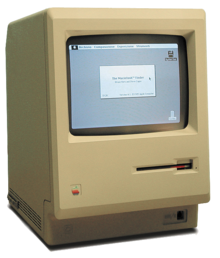
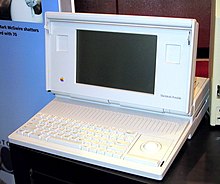
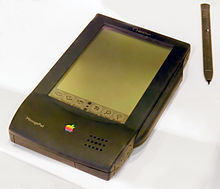
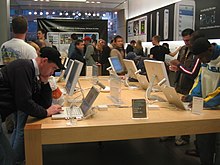
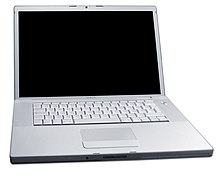

0 comments:
Post a Comment